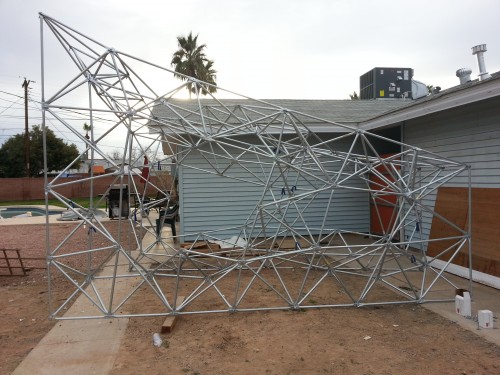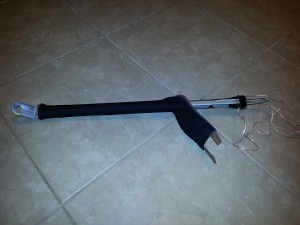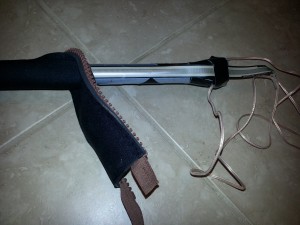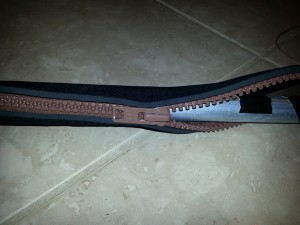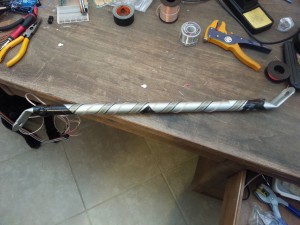The Amyloid Project
Sculpture
In partnership with Brian Korsedal of Arcology Now, urbanSTEW is designing and building a large-scale, steel structure that reflects the physical shape of an amyloid. (Amyloids are created when IDPs aggregate together. See “Project Inspiration.”) urbanSTEW’s steel structure will be fabricated with sensors that allow participants to create unique soundscapes by touching various identified structure bars. The interactive soundscape may be played solo, or more interestingly, become a collaborative experience with multiple people enlivening the soundscape with new sounds, based on the color and location of the bar they are touching.
The Steel Structure
3D Design:
boxy_cut23-Jan-2014 111310_compiled from BrianKorsedal on Sketchfab.
The Structure Build
While the actual assembly of the steel structure takes time, the process is made much easier by Archology Now’s ingenious bar coding system. Each bar in the structure is labeled with a unique code that tells builders exactly where it belongs in the structure and in which order it should be added. Piece-by-piece, the structure started as individual bars and ended as the structure shown below.
Amyloid Structure Build from urbanSTEW on Vimeo.
Special thanks to Brian Korsedal, Alex Nelson, Steve Wilcox, Debra Mumford, Michael Soto, Catherine Reid, Moses Fidal and Alex Fitch for your help building the structure.
The Sensor Bars
Pressure Sensors: 10 of the 339 bars in the steel structure frame will be fabricated with 2 foot long pressure sensors strips.
From an audience point of view, these bars will be denoted by the colors blue or red. Pressure sensor strips will be secured along the steel bars and then covered by blue or red neoprene fabric. (The same fabric used to make wet suits.) Here is a prototype with black neoprene. As you can see each neoprene cover will be equipped with a zipper ensuring easy access to the sensors in case of repair.
Sensor Assembly: In this picture, you can see that we originally planned to secure the sensor strip in a spiral. This caused problems in the sensor data. The spiraling activated the sensor and decreased the sensor range to a point where it would not work for our purposes. As a result, we now plan to secure pressure sensors in a straight line.
Pager Motor: Each bar will also be outfitted with two pager motors. As participants squeeze or grab the blue and red bars, the pager motors will vibrate in recognition of the participant. The harder the person squeezes the bar, the stronger the haptic response.
Soundscape: Sensor data from each bar will also control an interactive soundscape surrounding the structure. As participants interact with the sensor bars, the soundscape will fluctuate and change. Participants may manipulate the soundscape not only by interacting with individual bars, but also by choosing specific combinations of blue and red bars. This nuanced interaction is intended to promote collaboration and prolonged interaction.

